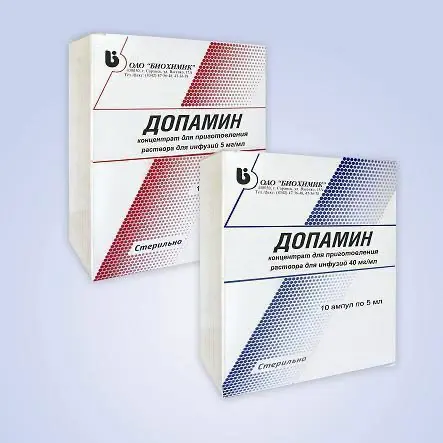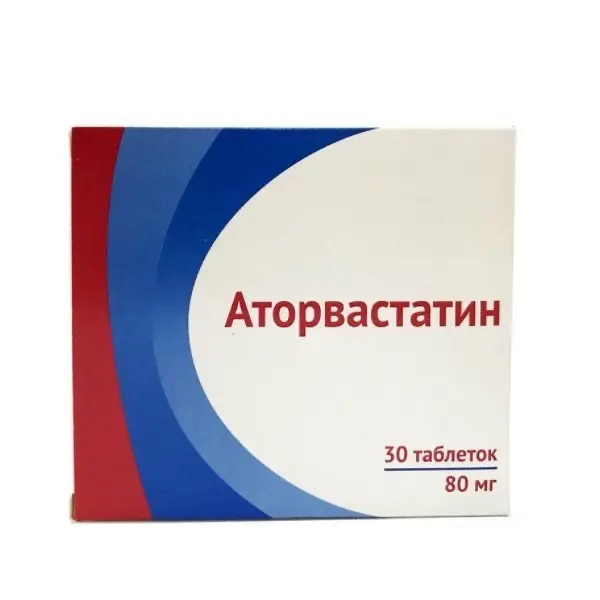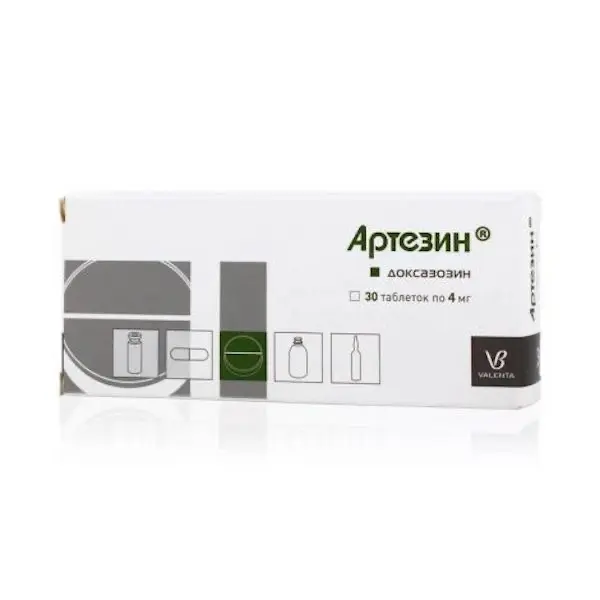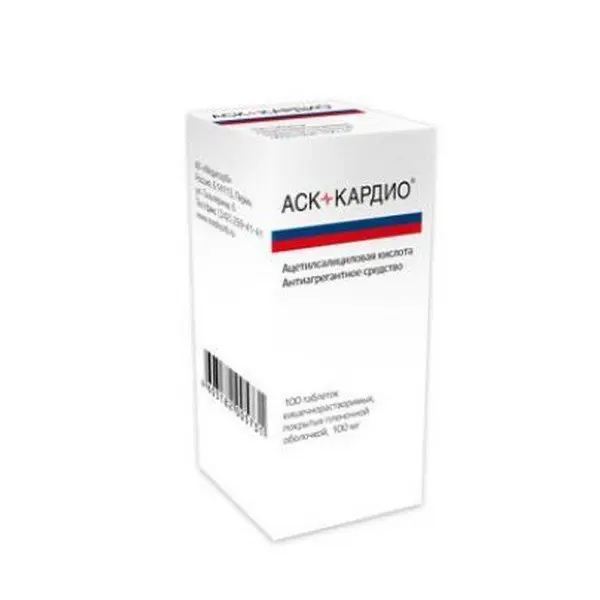Description
Dopamine Pharmacodynamics
Cardiotonic, hypertensive, vasodilator, diuretic. It stimulates beta-adrenoreceptors (in small and medium doses) and alpha-adrenoreceptors (in large doses). Improvement of systemic hemodynamics leads to diuretic effect. It has a specific stimulatory effect on postsynaptic dopamine receptors in vascular smooth muscle and the kidneys.
At low doses (0.5-3 µg/kg/min), it acts predominantly on dopamine receptors, causing dilation of renal, mesenteric, coronary and cerebral vessels. Dilation of renal vessels leads to increased renal blood flow, increased rate of glomerular filtration, increased diuresis and sodium excretion; mesenteric vessels are also dilated (this distinguishes the action of dopamine on renal and mesenteric vessels from that of other catecholamines).
At low and medium doses (2-10 µg/kg/min), it stimulates postsynaptic beta1-adrenoreceptors, which causes a positive inotropic effect and an increase in the minute blood volume (MOB). Systolic blood pressure (BP) and pulse pressure may increase; diastolic BP is unchanged or slightly increased. Total peripheral vascular resistance (TPR) usually does not change. Coronary blood flow and myocardial oxygen consumption tend to increase.
At high doses (10 µg/kg/min or greater), alpha1-adrenoreceptor stimulation predominates, causing increased ROS, heart rate (HR), and renal vasoconstriction (the latter may reduce previously increased renal blood flow and diuresis). Both systolic and diastolic BP increase due to increased IOC and PPS.
Onset of therapeutic effect is within 5 min against the background of IV administration and lasts for 10 min.
Indications
– Shock of various genesis: cardiogenic, postoperative, hypovolemic, infectious-toxic, anaphylactic, hypovolemic (only after restoration of circulating blood volume);
– acute cardiovascular insufficiency;
– “low cardiac output” syndrome in cardiac surgery patients;
– arterial hypotension.
Contraindications .
– Hypersensitivity to the active substance or other components of the drug, including hypersensitivity to other sympathomimetics,
– thyrotoxicosis,
– pheochromocytoma,
– closed-angle glaucoma,
– tachyarrhythmia,
– ventricular fibrillation,
– Under 18 years of age (efficacy and safety have not been established),
– Breast-feeding period,
– concomitant use with cyclopropane and halogen-containing agents for general anesthesia.
Caution:
Hypovolemia, marked aortic stenosis, myocardial infarction, cardiac rhythm disorders (ventricular arrhythmias, atrial fibrillation), metabolic acidosis, hypercapnia, hypoxia, pulmonary arterial hypertension, occlusive vascular diseases (including atherosclerosis, thromboembolism, obliterating thrombangitis, obliterating endarteritis, diabetic angiopathy, Raynaud’s disease, frostbite), diabetes, bronchial asthma (if there is a history of hypersensitivity to disulfite), idiopathic hypertrophic subaortic stenosis, hypokalemia, renal impairment, liver function impairment, concomitant use with MAO inhibitors, pregnancy.
Administration during pregnancy and breast-feeding:
In pregnant women the drug should be used only if the estimated benefit to the mother exceeds the potential risk to the fetus (in the experiment an adverse effect on the fetus was found) and/or the child.
It is unknown whether dopamine penetrates into the breast milk. Breast-feeding should be discontinued during application of the drug.
Dosage and administration method
- It is administered intravenously, dropwise, as a continuous infusion.
- The dose is adjusted individually depending on the severity of the shock, the value of BP and the patient’s reaction to the treatment.
- To enhance diuresis and obtain inotropic effect (increased myocardial contractile activity), it is administered at a rate of 100-250 mcg/min (1.5-3.5 mcg/kg/min) (low-dose region).
In intensive surgical therapy, 300-700 mcg/min (4-10 mcg/kg/min) (area of medium doses); in septic shock, 750-1500 mcg/min (10.5-20 mcg/kg/min) (area of maximum doses). - In some cases, in order to influence BP, it is recommended to increase the dose to 40-50 mcg/kg/min or more, or, if the effect of continuous infusion of the drug is insufficient, norepinephrine (noradrenaline) is additionally prescribed in a dose of 5 mcg/min at a patient body weight of about 70 kg.
- If cardiac arrhythmias occur or become more frequent, regardless of the dose used, further increase in the dose is contraindicated.
- The infusion rate should be selected individually to achieve the optimal patient response. Most patients manage to maintain a satisfactory condition when using doses of dopamine less than 20 µg/kg/min.
- It is recommended to gradually decrease the rate of intravenous infusion of the drug to avoid the development of arterial hypotension.
- Bolus administration of the drug should be avoided.
- If diastolic blood pressure is disproportionately increased (i.e. if pulse pressure is markedly decreased) and/or diuresis is decreased, the infusion rate should be reduced and such patients should be closely monitored in the future.
- Duration of use: the duration of infusion depends on the individual characteristics of the patient. There is a positive experience of infusion duration up to 28 days.
- After the clinical situation is stabilized, the drug shall be withdrawn gradually.
- Rule of solution preparation: 0.9% sodium chloride solution, 5% glucose solution, Ringer-lactate solution are used for dilution. To prepare a solution for IV infusion, 400-800 mg of dopamine should be added to 250 ml of solvent (dopamine concentration will be 1.6-3.2 mg/ml).
- The infusion solution should be prepared immediately before use (solution stability is maintained for 24 h, except for mixture with Ringer-lactate solution – maximum 6 h).
- Dopamine solution should be clear and colorless.





